Climb a Coast Redwood
Crown
Redwoods are the tallest trees on earth reaching more than 350 feet high.
Endangered marbled murrelets lay their eggs on the upper branches of redwoods.
Canopy
Creatures like the wandering salamander can live their entire life in a redwood canopy.
Redwoods can be so big and old that other trees and plants live on their branches and trunks.
Branches
A redwood’s leaves can both “drink” from fog and help make it rain.
Redwood leaves clean air by pulling in carbon and storing more of it than any other tree.
Trunk
Redwoods are resistant to rot and fire, so all but 5% of old-growths were cut down for lumber.
Fire can burn a cave-like hole in a living redwood where owls and bats like to live.
Bark
The bark can be up to a foot thick and full of tannins that protect it from bugs, rot, and fire so it can live for thousands of years.
Redwoods have survived for millions of years with some fossils dating back to the Jurassic age of dinosaurs.
Roots
Redwoods intertwine their roots with each other to stabilize one another and share nutrients.
Redwood roots help provide clean water and habitat for endangered coho salmon to lay their eggs.
Redwood Story:CrownCanopyBranchesTrunkBarkRoots
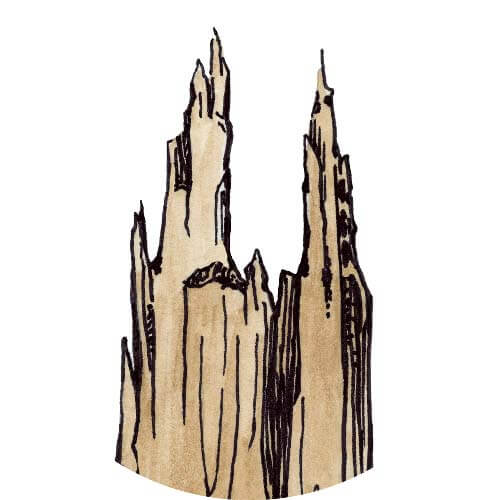
Redwoods are the tallest trees on earth reaching more than 350 feet high.
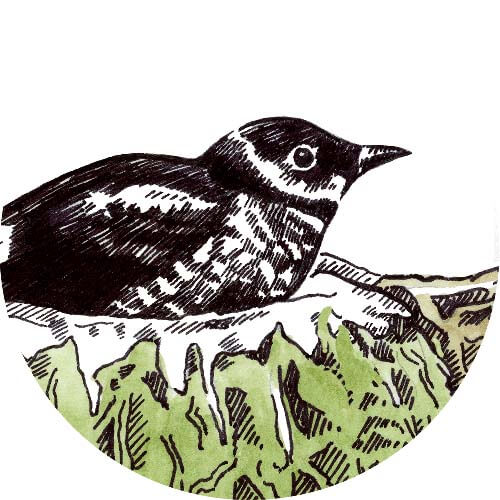
Endangered marbled murrelets lay their eggs on the upper branches of redwoods.
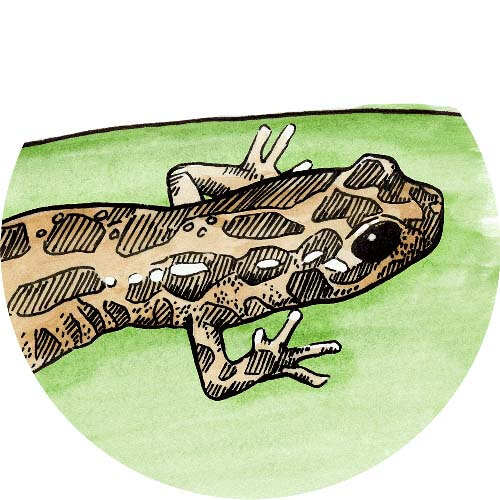
Creatures like the wandering salamander can live their entire life in a redwood canopy.
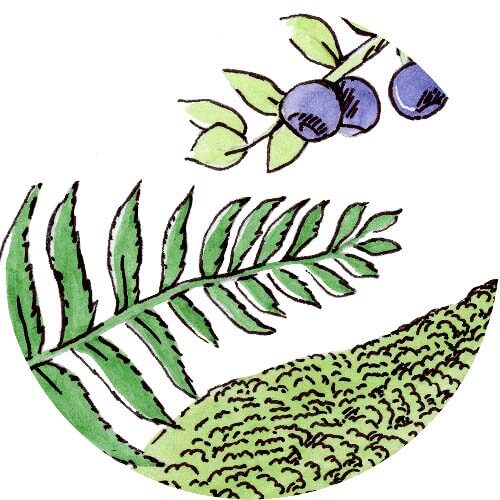
Redwoods can be so big and old that other trees and plants live on their branches and trunks.
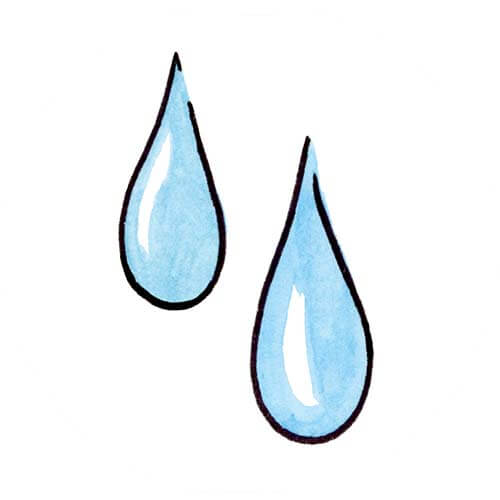
A redwood’s leaves can both “drink” from fog and help make it rain.
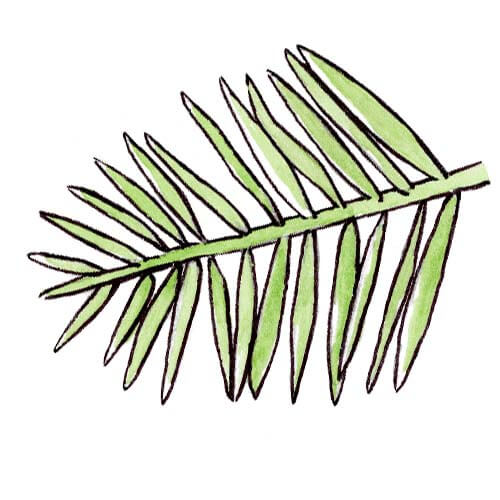
Redwood leaves clean air by pulling in carbon and storing more of it than any other tree.
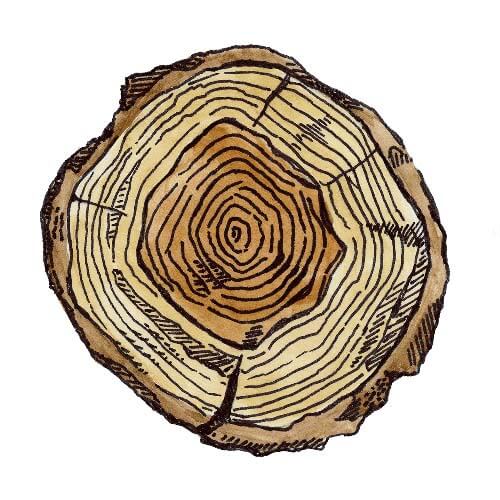
Redwoods are resistant to rot and fire, so all but 5% of old-growths were cut down for lumber.
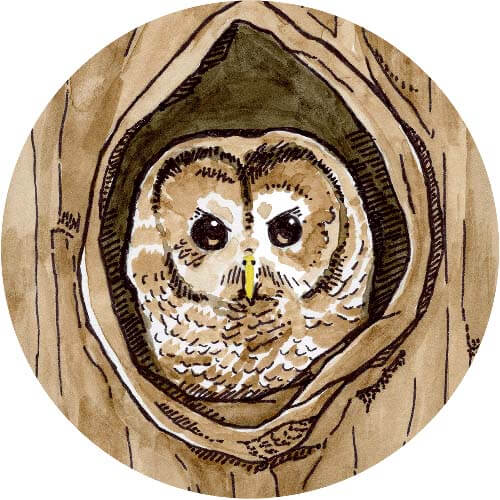
Fire can burn a cave-like hole in a living redwood where owls and bats like to live.
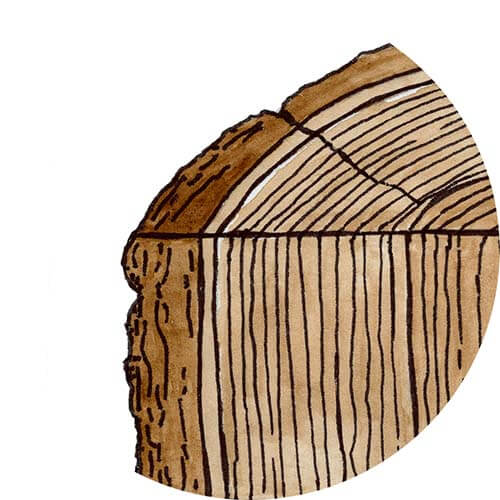
The bark can be up to a foot thick and full of tannins that protect it from bugs, rot, and fire so it can live for thousands of years.
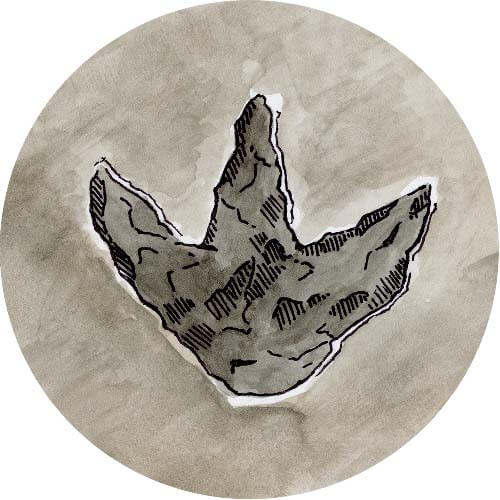
Redwoods have survived for millions of years with some fossils dating back to the Jurassic age of dinosaurs.
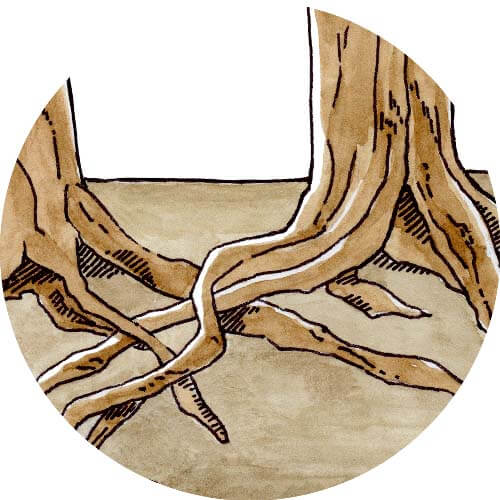
Redwoods intertwine their roots with each other to stabilize one another and share nutrients.
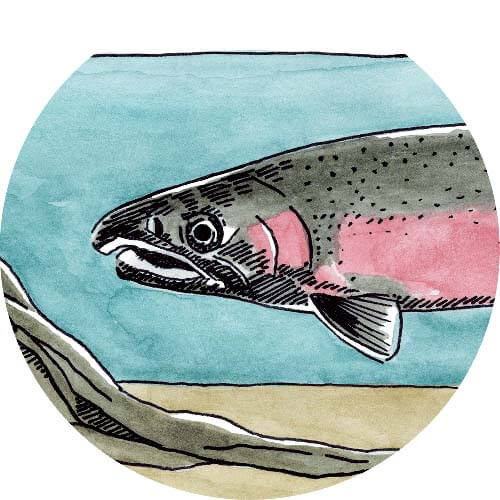
Redwood roots help provide clean water and habitat for endangered coho salmon to lay their eggs.
1. Tallest Tree on Earth
Coast redwood trees are the tallest trees on the planet. They can grow to 300 feet high or more, as compared to the tallest pine tree at 268 feet or the tallest tanoak at 162 feet. The tallest recorded redwood tree in the Santa Cruz Mountains is Big Basin Redwoods State Park’s “Mother of the Forest” at 329 feet high which is just 50 feet shy of the tallest tree on earth, the redwood known as “Hyperion” see footnote number 1. All this magnificence in height, and yet a typical redwood’s root system is only 6 to 12 feet deep. Redwoods create the strength to withstand powerful winds and floods by extending their roots outwards, up to 100 feet wide from the trunk, and living in groves where their roots can intertwine. A redwood can’t grow to be the tallest tree on earth alone. It needs the support and protection of other trees in the forest to grow tall—holding carbon and providing plant and wildlife habitat every inch of the way. That’s why it’s so important to protect and connect forest lands so the trees can thrive together.
photo by I. Bornarth
2. Almost as Old as the Dinosaurs
The earliest redwoods showed up on Earth shortly after the dinosaurs – before flowers, birds, spiders… and, of course, humans. Redwoods have been around for about 240 million yearssee footnote number 2, and in California for at least 20 million years, compared to about 200,000 years for “modern” humanssee footnote number 3. However, in just the last 150 years, human impacts have drastically reduced the number of these ancient trees through clear-cut logging and development. Only 5% of old-growth redwood forests remain. Today, Sempervirens Fund protects and restores thousands of acres of redwood forests in the Santa Cruz Mountains so they can continue to provide habitat, clean air, and awe for generations to come.
photo by Ken Lund.
3. They Live for Thousands of Years
Officially, the oldest living coast redwood has been alive for at least 2,200 years, but foresters believe some coast redwoods may be much oldersee footnote number 4. Their bark helps them survive many hardships that other trees cannot—it can be at least a foot thick and contains lots of tannins, a compound that makes redwoods resistant to insects, fungus and diseases. Their bark has very little resin which is one of the ways redwoods are fire resilient. Although a redwoods’ ability for a long lifespan contributed to its Latin name, Sequoia sempervirens—sempervirens means "evergreen" or "everlasting” in Latin—most of the remaining redwoods in the Santa Cruz Mountains are “second-growth”, about 50-150 years old. When you walk or ride through the Santa Cruz Mountains, you are in a nursery of young redwoods that, if protected, can live for 2,000 years cleaning carbon from the air, providing habitat for wildlife, and inspiring people for generations to come. That’s how our founders named our nonprofit organization working to protect, expand and care for the local redwood forests “Sempervirens” in 1900. Learn more about Sempervirens Fund’s history protecting redwoods.
photo by I. Bornarth
4. Redwoods Take Care of Each Other
A redwood’s shallow but widespread roots, help them survive by intertwining with the roots of other trees around them. Intertwined root systems provide stability to these mighty trees during strong winds and floods - quite literally holding one another down. Their shallow roots can also sprout and support new redwood trees far more successfully than from their cone seeds. Redwoods can often be seen growing in circles, known as “fairy rings” or “family circles”, because they sprouted from the roots of a parent tree. The parent tree helps to nourish the sprouts with water and sugars through its well-established root system while they grow. When the parent trees die, the young redwoods continue to grow in the circle shielding, stabilizing, and nourishing each other through their roots. Redwoods will help each other even if they aren’t “family”. Trees in the ring aren’t always genetically identical or clones of the parent tree. Some of the redwoods in a ring can also grow from seedlings see footnote number 5. Redwoods take care of one another supporting each other with nutrients through their interconnected roots including their young, sick and old. We’re also just beginning to learn about how trees like redwoods communicate and work together see footnote number 6. It takes a forest to raise a mighty redwood. Redwoods are stronger together. By protecting and connecting redwood forests in the Santa Cruz Mountains, we can help redwoods thrive together so they can grow tall, clean the most air, and provide habitat and awe for thousands of years.
5. They Make Rain
Redwoods can make it rain. Redwood trees prefer a moist environment to get all of the water they need for their gigantic size. They have adapted to help form their own habitat. A redwood’s leaves can both absorb moisture from fog right from the air and can also condense fog into drops and rain them down to soak the soil around themsee footnote number 7. But that’s not all. From their leaves, redwoods can release terpenes which help condense moisture in the air into clouds that cool the forestsee footnote number 8. Redwoods can also transpire moisture back into the air to help keep the forest cool and moist during dry months for themselves and the plants around them. You can read more about the role redwoods play in the water cycle here.
photo by F. Balthis
6. Entire Ecosystems Live in Their Branches
Entire ecosystems can live within redwood branches high off the ground. Because redwoods can grow so large and old, their shed leaves collect together with dust and water on their branches and eventually become soil mats that create mini-ecosystems see footnote number 9. Hundreds of plants including ferns, moss, lichen, huckleberries, and even other full-sized trees have been found living in the canopies of redwoodssee footnote number 10. These plants provide food for wildlife living in the redwood’s soil mats including insects and amphibianssee footnote number 11. While many more species of birds and small mammals such as bats and squirrels nest and find food growing on redwoods, some species like wandering salamanders live their entire lives in the canopy of a single redwood treesee footnote number 12.
photo by daveynin
7. Wild Animals Thrive Here
The redwood forests of the Santa Cruz Mountains are near the end of the largest temperate rainforest in the world which stretches up the north Pacific Coastsee footnote number 13 and supports hundreds of species of wildlifesee footnote number 14. Wild, endangered creatures like mountain lions, Coho salmon and marbled murrelet depend on our local redwood forests to survive. Wildlife need large, connected areas of diverse habitat to get the food, water, shelter, and potential mates to thrive. Although some species like the Strobeen’s parnassian butterfly have already disappeared from the Santa Cruz Mountains due to habitat losssee footnote number 15, other species like endangered coho salmon are making a comeback thanks to habitat protection and restoration efforts. Protecting and connecting habitat for wildlife is especially critical for their survival as our communities continue to grow into natural places that once provided them refuge. When we protect habitat for threatened and endangered species, often the most sensitive or specialized creatures, all wildlife in and near the habitat benefit.
8. Redwoods are Climate Change Heroes
While all trees are crucial to maintaining a stable, human-friendly climate, redwoods are climate change heroes. Studies show that coast redwoods capture more carbon dioxide (CO2) from our cars, trucks and power plants than any other tree on Earthsee footnote number 16. Thanks to their large size, long lifespan, and rot-resistant wood, redwood trees can pull and hold at least three times more carbon from the air, thereby cleaning more air and helping to keep temperatures from rising, than the average treesee footnote number 17. In fact, redwoods can be so large that new studies measuring them more effectively with the use of lasers and computer modeling to better estimate their size show that redwoods may be 30% larger than previously thought thereby holding even more carbonsee footnote number 18. More research is being done to see how redwood trees can help to decrease the effects of climate change. In the meantime, protecting the redwood forests we have now is crucial particularly as the effects of climate change itself including higher temperatures, drought, and much hotter and more frequent wildfires threaten them. As the climate changes, the redwood forests in the Santa Cruz Mountains are one of very few places that can provide a refuge for local plants and animals to survive see footnote number 19, because the area has many microclimates, is cooled by coastal summertime fog and is still largely unpaved. Read more about Redwoods and Climate Change.
9. Last Natural Habitat
Coast redwood’s only natural habitat is right here on the Pacific Coast from Big Sur to southern Oregonsee footnote number 20. Once redwoods had a much wider range across the Northern Hemisphere, including western North America and the coasts of Europe and Asiasee footnote number 21. The coastal fog in this area has helped supply enough water to support the redwood giants through all of the seasonssee footnote number 22 for the last 20 million yearssee footnote number 23. Although coast redwoods have been established by people in other places of the world like New Zealandsee footnote number 24, the oldest and tallest coast redwoods are in their natural habitatsee footnote number 25 where they have rain, fog, and forests of neighboring redwoods, fungi, and creatures like banana slugs helping to support them. Protecting their last remaining natural habitat is crucial so redwoods can reach their full potential as the tallest trees on the planet and our awe-inspiring climate change heroes.
10. Only 5% of Redwoods are Left
Only 5% of the original old-growth coast redwood forests that flourished on the Pacific Coast are left. Because redwoods are extremely resistant to insects, fire and rot, they are treasured for building and 95% of them have been cut down since the 1850ssee footnote number 26. The survival of several redwood buildings from the 1906 fire in San Francisco launched a flurry of demand for redwood lumber in the rebuilding of the city and elsewheresee footnote number 27. By 1900, logging spurred a group of concerned people to form Sempervirens Club, now known as Sempervirens Fund, and start the redwood conservation movement which has successfully preserved thousands of acres of redwood forest. However, there is much more land still at risk. In 2011, the International Union for Conservation of Nature listed redwoods as endangeredsee footnote number 28. Today, we have a rare chance to re-establish the once-vast and vibrant local redwood forest into a magnificent, life-giving world between Silicon Valley and the Pacific Ocean. Although many old-growth redwoods have been cut down, younger second-growth redwoods have resprouted since then, some even of the same genetic stock of their massive predecessors. By protecting redwood forests and helping to restore ideal conditions through careful stewardship, old-growth redwood forests can grow again. With a little help from us to get started, the redwood forest can recover from the massive logging and fragmentation that took place during the last 150 yearssee footnote number 29. Once protected and restored, the redwood forest will take care of itself – providing plant and wildlife habitat, clean air, and inspiration for thousands and even millions of years to come.
Sources
Interested in digging a little deeper into the science behind these redwood facts and history? Here are some sources with more information indicated in the facts above:
footnote number1
“Tallest Living Tree.” Guinness Book of World Records, 2021, https://www.guinnessworldrecords.com/world-records/tallest-tree-living.
Martin, Glen. “World's tallest tree, a redwood, confirmed.” SFGate, Hearst Newspapers, 15 Jan. 2012, https://www.sfgate.com/bayarea/article/HUMBOLDT-COUNTY-World-s-tallest-tree-a-2550557.php.
Van Pelt, Robert. “Forest Giants of North America.” Seattle: University of Washington Press, 2001.
footnote number 2
Endo, S. “A Record of Sequoia from the Jurassic of Manchuria.” Botanical Gazette, 113 2, 1951, Pages 228-230. http://fossilworks.org/bridge.pl?a=referenceInfo&reference_no=70374.
footnote number 3
Yang, Z.Y., et al. "Three Genome-based Phylogeny of Cupressaceae s.l: Further Evidence for the Evolution of Gymnosperms and Southern Hemisphere Biogeography". Molecular Phylogenetics and Evolution, 64 (3), 2012, Pages 452—470, https://doi.org/10.1016/j.ympev.2012.05.004.
footnote number 4
Earle, Christopher J .”Eon Tree Report.” The Gymnosperm Database, 16 Jun. 1999, https://www.conifers.org/cu/se/eon_tree.txt.
footnote number 5
Narayan, Lakshmi, et al.” A genotyping protocol for multiple tissue types from the polyploid tree species sequoia sempervirens (CUPRESSACEAE).” Applications in Plant Sciences,Volume3, Issue 3, 9 Mar. 2015, Botany Association of America, https://doi.org/10.3732/apps.
footnote number 6
Jabr, Ferris. “The Social Life of Forests.” New York Times Magazine, 2 Dec. 2020, https://www.nytimes.com/interactive/2020/12/02/magazine/tree-communication-mycorrhiza.html.
Simard, Suzanne W., et al. “Mycorrhizal networks: Mechanisms, ecology and modelling.” Fungal Biology Reviews, Volume 26, Issue 1, 2012, Pages 39-60, https://zoology.ubc.ca/bdg/pdfs_bdg/2015%20Spring/Simard%20et%20al.%202012.pdf (Links to PDFs might include documents that are not accessible).
footnote number 7
Limm, E. B., et al. “Foliar water uptake: a common water acquisition strategy for plants of the redwood forest.” Oecologia, 161(3), 2009, Pages 449—459, https://doi.org/10.1007/s00442-009-1400-3.
footnote number 8
Lund University. "Aerosols from coniferous forests no longer cool the climate as much." ScienceDaily, 25 Sept. 2019, www.sciencedaily.com/releases/2019/09/190925115119.htm.
Kirkby, J., et al. “Ion-induced nucleation of pure biogenic particles.” Nature, 533, Pages 521—526, 2016, https://doi.org/10.1038/nature17953.
footnote number 9
Sawyer, J.O., et al. “Redwood trees, communities, and ecosystems.” Redwood Trees, Communities and Ecosystems: A Closer Look, Pages 81-118, 2000, https://www.researchgate.net/publication/287546821_Redwood_trees_communities_and_ecosystems.
Sillett, S.C., Van Pelt, R. “Trunk reiteration promotes epiphytes and water storage in an old-growth redwood forest canopy.” Ecological Monographs, 77, Pages 335—359, 2007, https://doi.org/10.1890/06-0994.1.
footnote number 10
Sillett, Stephen, and Van Pelt, Robert. “A redwood tree whose crown is a forest canopy.” Northwest Science, 74, Pages 34-43, 2000, https://www.researchgate.net/publication/279556792_A_redwood_tree_whose_crown_is_a_forest_canopy.
Sillett, Stephen , and Van Pelt, Robert. “ A Redwood Tree Whose Crown May Be The Most Complex On Earth.” 2000, https://www.researchgate.net/publication/237287219_A_REDWOOD_TREE_WHOSE_CROWN_MAY_BE_THE_MOST_COMPLEX_ON_EARTH.
Sillett, S.C., Bailey, M.G. “Effects of tree crown structure on biomass of the epiphytic fern Polypodium scouleri (Polypodiaceae) in redwood forests.” American Journal of Botany, Volume 90, Issue 2, Pages 255-261, 1 Feb. 2003, https://doi.org/10.3732/ajb.90.2.255.
footnote number 11
Sawyer, J.O., et al. “Redwood trees, communities, and ecosystems.” Redwood Trees, Communities and Ecosystems: A Closer Look, 2000, https://www.researchgate.net/publication/287546821_Redwood_trees_communities_and_ecosystems.
Sillett, S.C., Bailey, M.G. “Effects of tree crown structure on biomass of the epiphytic fern Polypodium scouleri (Polypodiaceae) in redwood forests.” American Journal of Botany, Volume 90, Issue 2, Pages 255-261, 1 Feb. 2003, https://doi.org/10.3732/ajb.90.2.255.
footnote number 12
Spickler, James, et al. “Evidence of a new niche for a North American salamander: Aneides vagrans residing in the canopy of old-growth redwood forest.” Herpetological Conservation and Biology, 1, 2006, https://www.researchgate.net/publication/26449214_Evidence_of_a_new_niche_for_a_North_American_salamander_Aneides_vagrans_residing_in_the_canopy_of_old-growth_redwood_forest.
Camann, Michael A.,et al. “Old-growth redwood forest canopy arthropod prey base for arboreal wandering salamanders: A report to Save-the-Redwoods League.” Humboldt State University, Arcata, CA, 2000, https://www.savetheredwoods.org/wp-content/uploads/pdf_camann.pdf (Links to PDFs might include documents that are not accessible).
footnote number 13
Wikipedia contributors. “Pacific temperate rainforests.” Wikipedia, The Free Encyclopedia, 1 May 2021, https://en.wikipedia.org/w/index.php?title=Pacific_temperate_rainforests&oldid=1020887730.
footnote number 14
Cooperrider, Allen, et al. “Terrestrial fauna of redwood forests.” In: Noss, Reed F. ed., The Redwood Forest: History, Ecology, and Conservation of the Coast Redwoods, Island Press, Covelo, California, Pages 119-163, 2000, https://www.fs.fed.us/psw/publications/welsh/psw_2000_welsh001_cooperrider.pdf (Links to PDFs might include documents that are not accessible).
footnote number 15
Ricketts, Taylor H. et al. “Terrestrial Ecoregions of North America: A Conservation Assessment.” Island Press, 1999, Page 244.
Olson, D., and Sawyer, John. “Northern California coastal forests.” World Wildlife Fund, 6 May 2021, https://www.worldwildlife.org/ecoregions/na0519.
footnote number 16
Sillett, Stephen C., et al. “Aboveground biomass dynamics and growth efficiency of Sequoia sempervirens forests.” Forest Ecology and Management, Volume 458, 15 Feb. 2020, https://doi.org/10.1016/j.foreco.2019.117740.
footnote number 17
Fimrite, Peter. “New reason to conserve redwoods - they're best at storing polluting carbon.” San Francisco Chronicle, April 30, 2020, https://www.sfchronicle.com/environment/article/New-reason-to-conserve-California-s-redwoods-15238034.php.
footnote number 18
Disney, M., et al. “New 3D measurements of large redwood trees for biomass and structure.” Scientific Reports, 10, 15 Oct. 2020, https://doi.org/10.1038/s41598-020-73733-6.
footnote number 19
Betts, Matthew G., et al. “Old-growth forests buffer climate-sensitive bird populations from warming.” Diversity and Distributions, Volume 24, Issue 4, April 2018, Pages 439-447, https://doi.org/10.1111/ddi.12688.
footnote number 20
Shirley, James Clifford. “Distribution Of The Redwoods.” The Redwoods of Coast and Sierra, University Of California Press, Berkeley, California,1940, https://www.nps.gov/parkhistory/online_books/shirley/sec4.htm.
Olson Jr., David F.,et al. “Sequoia Sempervirens.” In Burns, Russell M., and Honkala, Barbara H. “Silvics of North America: 1. Conifers.” Agriculture Handbook 654, U.S. Department of Agriculture, Forest Service, Washington, DC., Volume 1, Page 675, 1990, https://ucanr.edu/sites/forestry/California_forests/http___ucanrorg_sites_forestry_California_forests_Tree_Identification_/Coast_Redwood_Sequoia_sempervirens_198/.
Little, Jr., Elbert L. “Conifers and important hardwoods.” Atlas of United States Trees, Volume 1, U.S. Department of Agriculture, Forest Service, Washington, D.C., 1971, Page 320.
Fox, L. III, and J. K. Lee. “Ultra-small scale color infrared photography proves useful for classifying and mapping coast redwood forest in California.” In Proceedings from the Twelfth Biennial Workshop on Color Aerial Photography and Videography, American Society for Photogrammetry and Remote Sensing, Bethesda, Maryland, 1989, Pages 61-70.
footnote number 21
Qing-Wen Ma, et al. “The coast redwoods (Sequoia, Taxodiaceae) from the Eocene of Heilongjiang and the Miocene of Yunnan, China.” Review of Palaeobotany and Palynology, Volume 135, Issues 3-4, 2005, Pages 117-129, https://doi.org/10.1016/j.revpalbo.2005.03.002.
footnote number 22
Dawson, T. “Fog in the California redwood forest: ecosystem inputs and use by plants.” Oecologia, 117, 1998, Pages 476-485, https://doi.org/10.1007/s004420050683.
Haemig, P.D. “Ecology of the Coast Redwood.” Ecology.Info 20, 2012, http://ecology.info/redwood.htm.
Palmer, Brian. “Climate explains why West Coast trees are much taller than those in the East.” Washington Post, April 30, 2012, https://www.washingtonpost.com/national/health-science/climate-explains-why-west-coast-trees-are-much-taller-than-those-in-the-east/2012/04/30/gIQA4Mf9rT_story.html.
footnote number 23
Zu-Yu Yang,et al. “Three genome-based phylogeny of Cupressaceae s.l.: Further evidence for the evolution of gymnosperms and Southern Hemisphere biogeography.” Molecular Phylogenetics and Evolution, Volume 64, Issue 3, 2012, Pages 452-470, https://doi.org/10.1016/j.ympev.2012.05.004.
footnote number 24
Gaman, Tom. “California's coast redwood in New Zealand.” In: Standiford, Richard B., et al. Proceedings of coast redwood forests in a changing California: A symposium for scientists and managers, Pacific Southwest Research Station, Forest Service, U.S. Department of Agriculture, Albany, CA, Pages 611-615, https://www.fs.usda.gov/treesearch/pubs/41339.
"Californian Redwood."The Redwoods - Whakarewarewa Forest, Rotorua, New Zealand, 6 May 2021, https://redwoods.co.nz/about/californian-redwood/.
footnote number 25
Voiland, Adam. “First-of-its-Kind Map Depicts Global Forest Heights.” NASA, 20 Jul. 2010, https://www.nasa.gov/topics/earth/features/forest-height-map.html.
footnote number 26
J.O. Sawyer,et al. “Characteristics of redwood forests.” R.F. Noss (Ed.), The redwood forest: history, ecology, and conservation of the coast redwoods, Island Press, Washington DC, 2000, Pages 39-80.
Burns, E.E.,et al. “State of redwoods conservation report.” Save the Redwoods League, San Francisco, CA, 2018.
“How many redwoods have been logged?” Redwood National and State Parks, National Park Service, 6 May 2021, https://www.nps.gov/redw/faqs.htm.
Thornburgh, Dale, et al. “Managing Redwoods.” The Redwood Forest, In: Noss, Reed F. ed., The Redwood Forest: History, Ecology, and Conservation of the Coast Redwoods, Island Press, Covelo, California, Page 229, https://www.fs.usda.gov/psw/publications/welsh/thornburgh1.pdf (Links to PDFs might include documents that are not accessible).
footnote number 27
Hull, Elizabeth. “Redwood in the 1906 San Francisco Earthquake & Fires.”Forest History Today, Spring/Fall, 2006, Pages 36-41, https://foresthistory.org/wp-content/uploads/2016/12/FHT_2006_Redwood-in-1906-san-francisco.pdf (Links to PDFs might include documents that are not accessible).
footnote number 28
Farjon, A., and Schmid, R. “Sequoia sempervirens.” The IUCN Red List of Threatened Species, 6 May 2021, https://dx.doi.org/10.2305/IUCN.UK.2013-1.RLTS.T34051A2841558.en.
footnote number 29
Gerhart, Matthew. “Expanding the Legacy of Research at the Fritz Wonder Plot, Big River, California: A Report to Save-the-Redwoods League.” Save-the-Redwoods League, and the Mendocino Land Trust, 2005, https://www.savetheredwoods.org/wp-content/uploads/pdf_gerhart.pdf (Links to PDFs might include documents that are not accessible).


